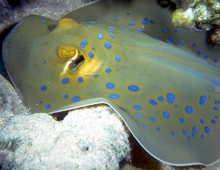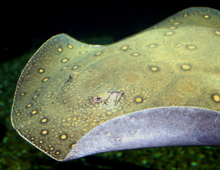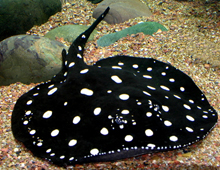
The DWA exhibits an unusually extensive series of freshwater and saltwater stingrays. This inhabitant of coral reefs from the Red Sea to the Indo-Pacific is one of the most colorful of all elasmobranchs (sharks, rays, and chimeras). It is a small stingray, never more than three feet long, including its tail. It hunts crustaceans and other invertebrates.





